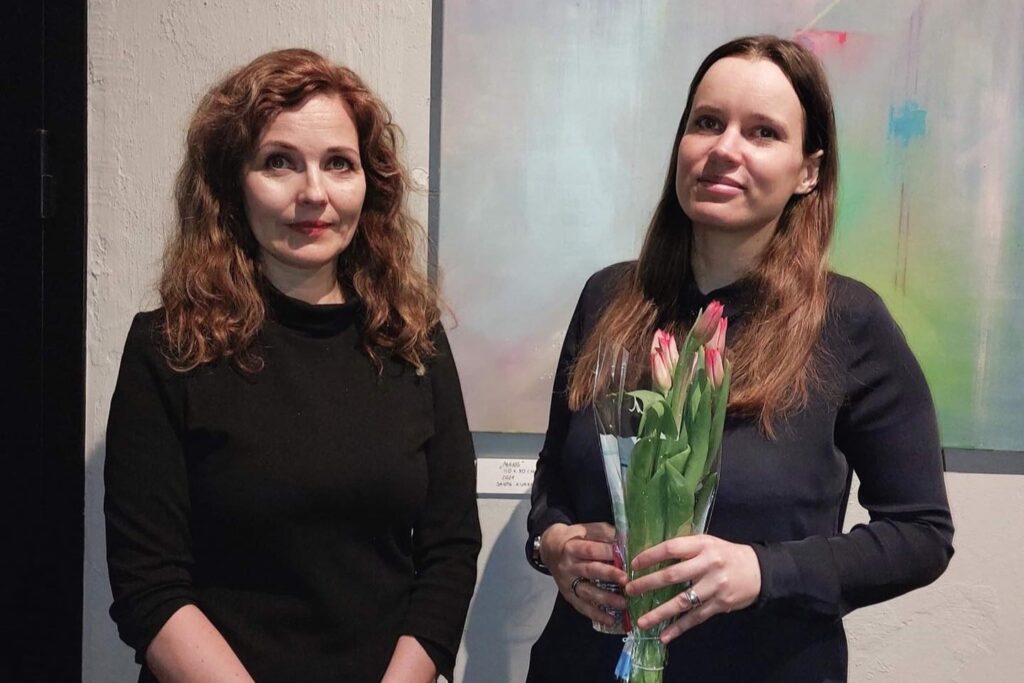Two Estonian artists – poet Elo Viiding and painter Santa Zukker – are trying to disrupt how people see art to make art exhibitions more engaging by combining paintings and poetry; their exhibition, “Vastukaja” (“Echo”), runs until 18 July at a piano bar in Tallinn.
“Painting is poetry that is seen rather than felt, and poetry is painting that is felt rather than seen,” Leonardo da Vinci, an Italian polymath of the High Renaissance, reportedly said.
When visiting an art gallery or a museum, it’s easy to wander around without pausing to look at specific works of art. Even when you do stop to look at a particular piece of art, sometimes it’s hard to engage with or interpret what you’re seeing. The label usually only tells you the artist, the year, and the title, but after it’s up to the viewer to make sense of it.
In Tallinn, two artists are trying to disrupt how we see art and to make art exhibitions more engaging. Estonian World talked to painter Santa Zukker and poet Elo Viiding about their exhibition “Vastukaja” (“Echo”), and how to bring art closer to people by combining different forms – to see (and feel) in a new way and by holding events outside traditional museums and galleries. The exhibition opened at the Põhjala Factory Studio House in May and continues to run in “The Place” piano bar at 8 Lootsi Street in Tallinn.
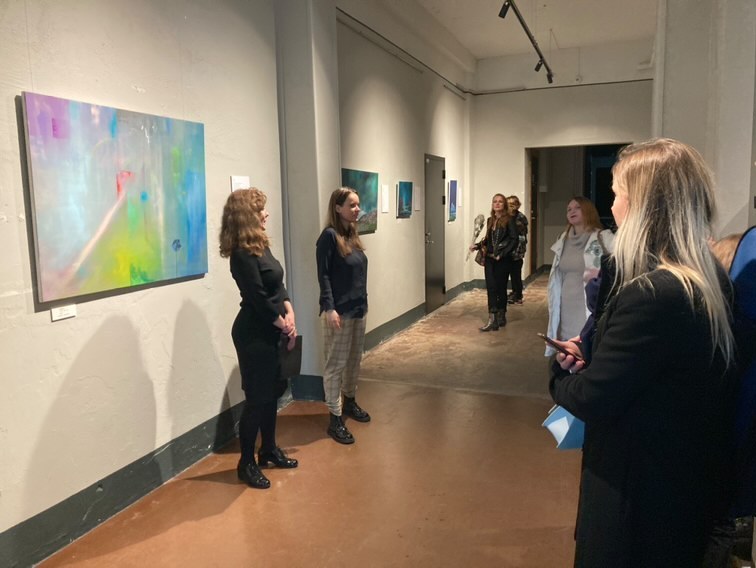
Elo Viiding is one of Estonia’s most interesting contemporary poets. She has a strong – and at the same time, also sensitive – social awareness: she strives to speak critically about problems in society and all the things that may oppress human freedom.
Santa Zukker is a young Estonian artist. She studied painting and drawing at the Baltic Film and Media School’s art classes under painter Orest Kormashov. She also organises art workshops in galleries and libraries.
Elo, your work is often devoted to exploring social topics, using your poems as statements on society, morality, mentality and the political situation. Is that your way of helping us look at ourselves and our society? Can art ever be too provocative in that sense?
I agree one could say it is kind of a help. As Susan Sontag (an American writer and philosopher – editor) famously said, “the only intelligence worth defending is critical, dialectical, sceptical, desimplifying”. I agree completely! A poet should have this kind of intelligence as a tool for their writing. Then her work also truly helps others. Concerning art and provocativeness: there certainly raises a question what is provocative nowadays.
We live in times where personal little enjoyments, selfish dramas and narcissistic spectacles made for cheap popularity, such as social media, strongly dominate. In a life oriented to benefit and monetary profit, for a mind filled with vulgar Tik-Tok filth, art, poetry and a life dedicated to painting or writing, contemplating and reading could be strange; a life devoted to art almost “provocative”.
Of course, it is generally very hard to live this kind of life as it is hard to afford it and the price is high. But this is vital for a poet and for an artist even if only for a very short time. In a societal climate where mostly only success is worshipped, art and living only for art – so as the richness of one’s inner life – could be the purest form of resistance. And yes, the results of this kind of life, the fruits of contemplating but passionate mind can be provocative and also full of valuable meaning and actually help others in need.
Is art a mirror of society?
Art can be a mirror of society, but also how people perceive, talk about and understand different types of art is a mirror of society and its state of development generally – not in a way that is progressive but as an indicator of society’s level of empathy. All this activity should – idealistically – lead to a better future for all of us.
For me, it is especially important to also hear the voices of sufferers, “others” and “losers”. I write by stepping out of known mindframes. How we talk about poetry, art and society can be intellectually provocative and few people are listening to us without needing to be rushing somewhere, without waiting, for fast conclusions and known truths. Of course, in open societies people perceive art totally differently than in closed societies or societies with big economic and political problems. In open societies people take art more as aesthetic enjoyment and personal satisfaction. In a more troubled society, art can be more a tool for radical changes. Or just pure and unattainable luxury.
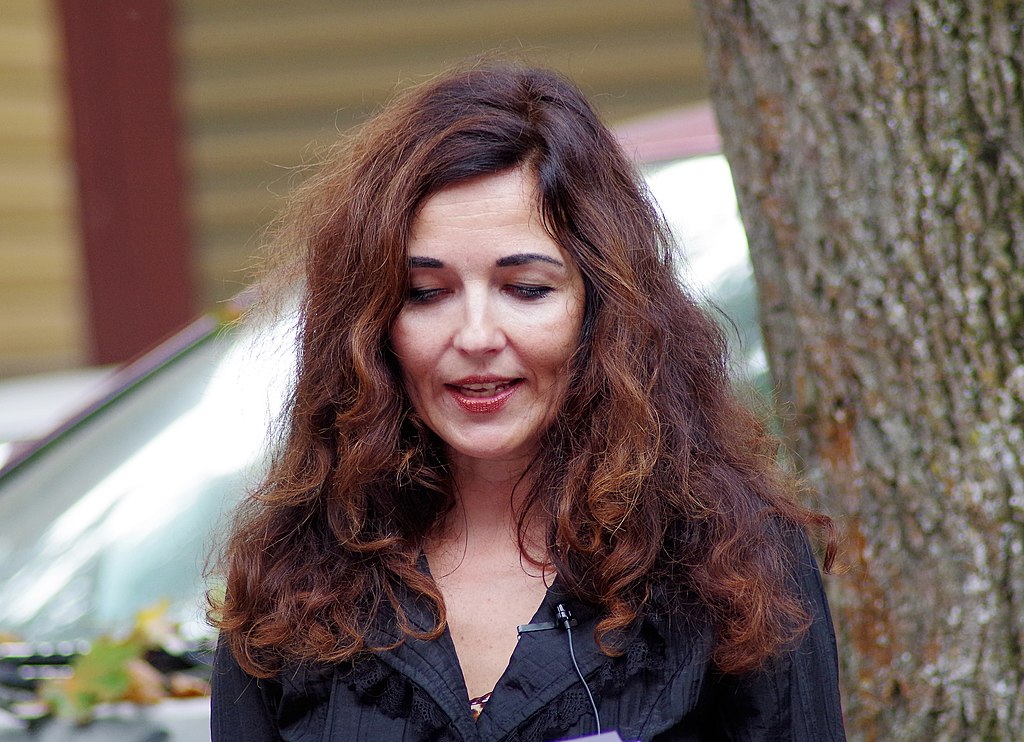
It has been more than thirty years since your first poetry collection, “Telg” (“Axis”), was published. Would you say the purpose and function of the poetry has changed since?
For me, poetry’s purpose is to express things you cannot read elsewhere. Poetry has to encourage people to think and feel differently, to see others and other life forms in a way that increases empathy.
For me, and I guess for other poets, the purpose has generally not changed. When my first collection of poems came out, it was the rough and tough 1990s and poetry almost completely lost its meaning – when you wrote poems you could not be taken too seriously, or you were a pathetic weirdo. In the 2000s, the situation improved a little as poetry rose to power again and there were many interesting and strong newcomers on a field.
In the 2010s, you could say poetry slams and publishing on the web was “in”. In the new decade, you can see again the interest in classical ink and paper books – as books are more and more expensive and represent desirable art objects.
But poetry endures; it will not die, and you can see a few strong young newcomers – poet Sanna Kartau, for example.
How do you see your poetry collections retrospectively?
I started with experimental poems, and I am grateful that every new collection of mine is still very different to the previous one. I try to keep changing and developing all the time. I feel I am never ready, never complete and always want to try new things, new artforms. I am very grateful to Santa Zukker for giving me the opportunity to write poems to match with her paintings – it was kind of a continuous, never-ending dialogue and I hope it will go on in the future and lead to a book.

How does your approach to art and history change, now we are in a time when a very awful history is being conducted in Europe in ways that we would not have thought possible a few months ago?
When we think about the times our grandmothers and grandfathers lived, human-induced evil is also quite fresh and actual as a memory. There is no history, only today’s actions. One should concentrate on the shortness of life on Earth and think about where and how we could help others, and other life-forms, in their need to exist. Art could be helpful as well.
How would you describe your work in general? What would you say your works are about?
I write about different topics and from different viewpoints; I also write role-poetry, create different personas as a way to try and express society’s unheard voices. My works are not light, they’re mostly socially critical, I write a lot about human suffering and generally don’t try to offer simple solutions or known answers or try to please my readers.
What would you say this exhibition is about?
This exhibition is a dialogue between two creative minds to overcome the loneliness on their own speciality field. It shows how one moment, one world could create new reactions as life on Earth itself. It acts as a metaphor of human life. We are continuously searching for a response, an echo from another human being. So do we, with Santa Zukker, and just try to show in the process where everything is a reaction.
***
Santa, what would you say your works are about?
My works are more into mystical realism. My landscapes and seascapes are quite realistic, but when you start to look at them closely you can see that they have some unrealistic elements. It’s the beauty and magic of art.
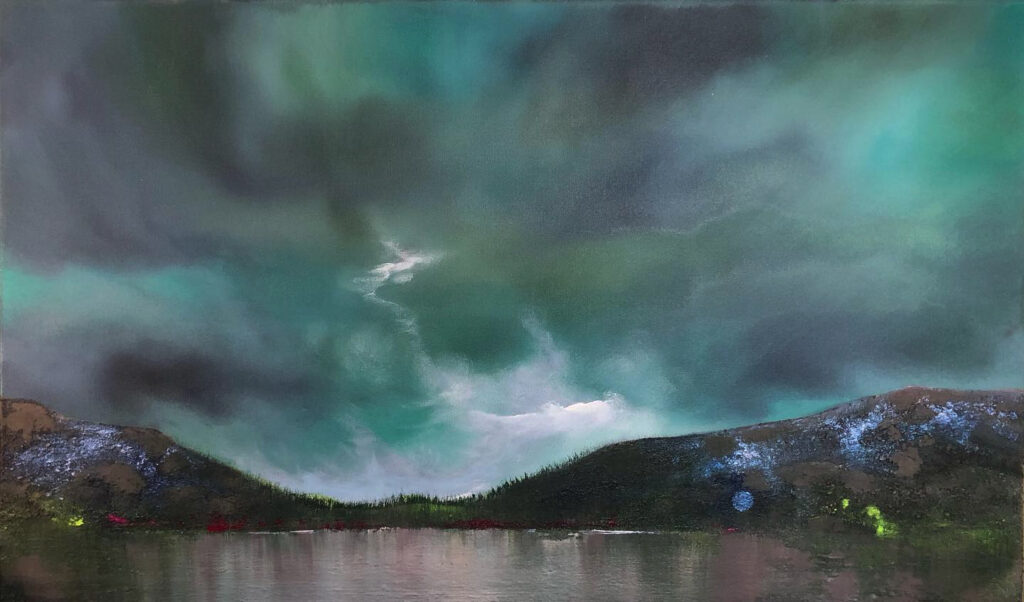
What is the exhibition about?
The exhibition is about how two languages of art are communicating with each other and how one can represent another. It is the method we used with Elo Viiding – she explains my paintings with her words. Poetry and painting are not very connected because words on paper are very gentle way of expressing your feelings. To the contrary, a painting is a very powerful image and gives you a lot of information.
Could you go over your design process?
I usually paint with acrylic paints on acrylic canvas. Before I start painting, I try to think, observe the world and its details, because I paint a lot from my unconscious mind. I like to paint at night, because I feel like the whole world sleeps and there’s just me and canvas. It leaves a room for imagination.

How did you start working with Elo?
I was a fan of her poems and literary art. We had been in touch on Facebook, and I suggested that she might write a poem on one of my pieces. It went well, so we continued very harmoniously. The first time we meet, we had some good tea at the “Must Puudel” (a café in Tallinn – editor). Elo is a fun person to be around, and you can talk about all the interesting subjects with her.
What use is art in times of wars and suffering?
Art is also suffering. Life creates art and vice versa. And art can be a way of escapism, which is a very powerful tool to stay sane in this crazy world. James Allen said in his book, “As a Man Thinketh”: “The dreamers are the saviours of the world”.
Do you think the appreciation of more classical paintings, sculptures and buildings has shifted, now that the poetry is being supplanted by digital imagery and other technology?
If you look at this question from a critical point of view, then you come across to the ethical questions of art. For example, Walter Benjamin (a German Jewish philosopher and cultural critic – editor) was uncertain about the value of technologically reproduced piece of art. I personally think appreciation hasn’t changed on how we think of art but how we can sense that through technical machines.
I like to feel and touch the texture of the painting on a canvas. When painting, I enjoy the process of working with “alive” materials, such as paints that smell, water that runs and brushes that move in my hand. And I like to think that the viewer feels that also.
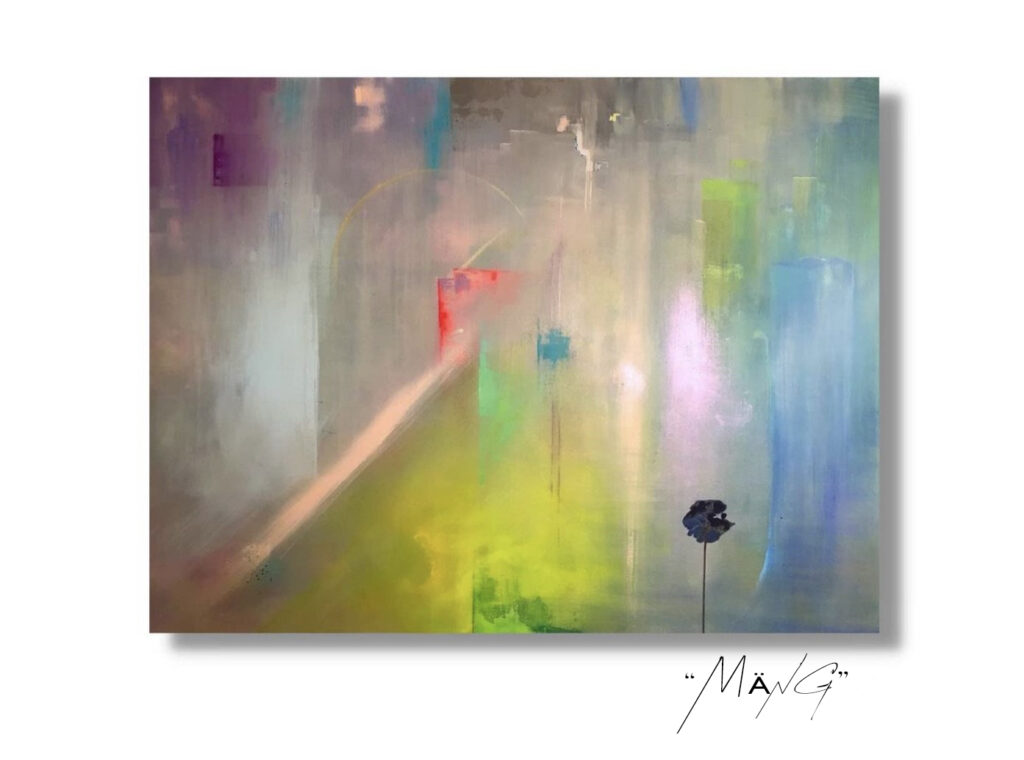
Poem “The Game” by Elo Viiding (translated by Elo into English from the Estonian original)
The game
It all ended at once, a great game of creation began, the world moved away from the old shell, from chaos began the dawn-pink path which through the red door leads to the sphere of god where we players woke up
Stays firmly in place at the top of the stalk looted land’s poisonous flower – burst into lasting farewell
***
The exhibition, “Vastukaja”, runs until 18 July at “The Place” piano bar at 8 Lootsi Street, Tallinn. The bar was recently opened by a Tallinn-based Italian pianist and singer, Tommaso Primavera, and regularly hosts art exhibitions and live concerts on weekends.

